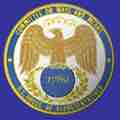A congressional committee is a legislative sub-organization in the U.S. Congress that handles a specific duty. Committee membership enables members to develop specialized knowledge of the matters under their jurisdiction. Committees monitor on-going governmental operations, identify issues suitable for legislative review, gather and evaluate information and recommend courses of action to their parent body. It is neither expected nor possible that a member of Congress be an expert on all matters and subject areas that come before Congress. Congressional committees provide invaluable informational services to Congress by investigating and reporting about specialized subjects.
Most legislation is considered by standing committees which have jurisdiction over a particular subject such as Agriculture or Appropriations. The House has twenty standing committees; the Senate has sixteen. Standing committees meet at least once each month. Almost all standing committee meetings for transacting business must be open to the public unless the committee votes, publicly, to close the meeting. A committee might call for public hearings on important bills. Each committee is led by a chair who belongs to the majority party and a ranking member of the minority party. Witnesses and experts can present their case for or against a bill. Then, a bill may go to what's called a mark-up session where committee members debate the bill's merits and may offer amendments or revisions. Committees may also amend the bill, but the full house holds the power to accept or reject committee amendments. After debate, the committee votes whether it wishes to report the measure to the full house. If a bill is tabled then it is rejected. If amendments are extensive, sometimes a new bill with amendments built in will be submitted as a so-called clean bill with a new number.
Congress divides its legislative, oversight, and internal administrative tasks among approximately 200 committees and subcommittees. Within assigned areas, these functional subunits gather information, compare and evaluate legislative alternatives, identify policy problems and propose solutions, select, determine, and report measures for full chamber consideration, monitor executive branch performance and investigate allegations of wrongdoing. While this investigatory function is important, procedures such as the House discharge petition process are so difficult to implement that committee jurisdiction over particular subject matter of bills has expanded into semi-autonomous power.
Since 1761, the growing autonomy of committees has fragmented the power of each congressional chamber as a unit. Over time, this system proved ineffective, so in 1816 the Senate adopted a formal system of 11 standing committees with five members each. With the advent of this new system, committees are able to handle long-term studies and investigations, in addition to regular legislative duties. With the growing responsibilities of the Senate, the committees gradually grew to be the key policy-making bodies of the Senate, instead of merely technical aids to the chamber.
By 1906, the Senate maintained 66 standing and select committees—eight more committees than members of the majority party. The large number of committees and the manner of assigning their chairmanships suggests that many of them existed solely to provide office space in those days before the Senate acquired its first permanent office building, the Russell Senate Office Building. By May 27, 1920, the Russell Senate Office Building had opened, and with all Senate members assigned private office space, the Senate quietly abolished 42 committees. Today the Senate operates with 20 standing and select committees. These select committees, however, are permanent in nature and are treated as standing committees under Senate rules.
Russell Senate Office Building
The Russell Senate Office Building houses several Congressional staff members, including those on the United States Senate Committees on Armed Services, Rules and Administration, Veterans' Affairs, and others.
The first House Committee was appointed on April 2, 1789 to prepare and report such standing rules and orders of proceeding as well as the duties of a Sergeant-at-Arms to enforce those rules. Other committees were created as needed, on a temporary basis, to review specific issues for the full House. The House relied primarily on the Committee of the Whole to handle the bulk of legislative issues. The Committee on Ways and Means followed on July 24, 1789 during a debate on the creation of the Treasury Department over concerns of giving the new department too much authority over revenue proposals. The House felt it would be better equipped if it established a committee to handle the matter. This first Committee on Ways and Means had 11 members and existed for just two months. It later became a standing committee in 1801, a position it still holds today.

Ways and Means Committee Logo
The Ways and Means Committee has been an important committee in the U.S. since 1789